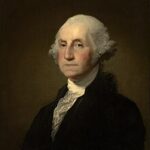The Revolutionary Decision
George Washington faced an unprecedented challenge in 1789. The Constitution provided little guidance on executive branch organization. 📊 Washington chose to create a formal advisory system that would transform American governance forever.
The presidential cabinet system emerged from practical necessity and constitutional interpretation. Washington appointed Thomas Jefferson as Secretary of State in March 1790. Alexander Hamilton became Secretary of Treasury in September 1789. Henry Knox served as Secretary of War, while Edmund Randolph filled the Attorney General position.
Constitutional Innovation
The Constitution mentioned “executive departments” but offered no specific structure. Washington’s interpretation of Article II powers created lasting precedent. ⚠️ Critics argued this concentration of power threatened republican principles. However, Washington designed the system to enhance accountability and expertise.
Immediate Implementation
Each cabinet member brought specialized knowledge to complex governance challenges. Hamilton’s financial expertise proved crucial for national debt management. Jefferson’s diplomatic experience guided foreign policy formation. This division of responsibilities created unprecedented administrative efficiency in the executive branch.
Impact:
Immediate Governmental Transformation
The presidential cabinet system revolutionized executive decision-making processes within months of implementation. 🌍 Foreign diplomats recognized America’s enhanced governmental credibility through organized leadership structure. Cabinet meetings became forums for policy debate and strategic planning.
Washington’s precedent influenced every subsequent presidency. The system provided checks within executive power while maintaining unity of command. Each secretary became accountable for departmental performance and policy outcomes.
Long-term Constitutional Legacy
The cabinet structure survived partisan transitions and constitutional crises for over two centuries. 🔥 Political parties later used cabinet appointments to balance regional and ideological interests. This flexibility allowed the system to adapt to changing national needs.
Modern presidential transitions depend entirely on Washington’s cabinet framework. The system enables smooth transfers of power and institutional continuity. Today’s executive branch contains fifteen cabinet-level positions, all tracing back to Washington’s original four departments.
International Influence
Washington’s cabinet model influenced democratic governments worldwide. Parliamentary systems adopted similar advisory structures for executive leadership. The American precedent demonstrated how presidential systems could maintain both efficiency and accountability through organized expert counsel.
